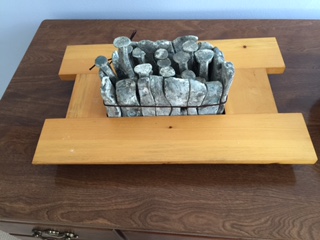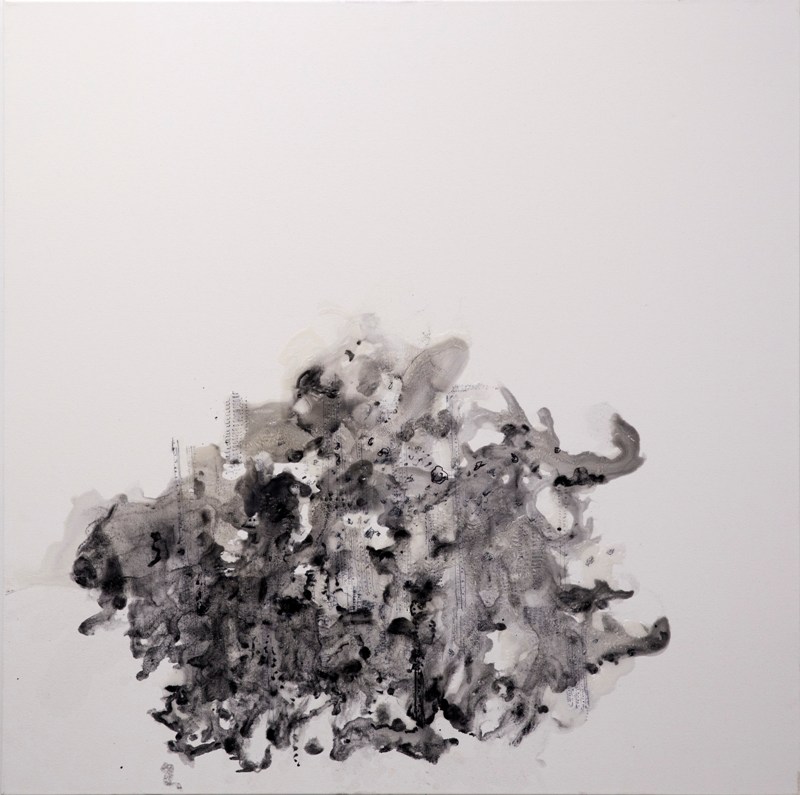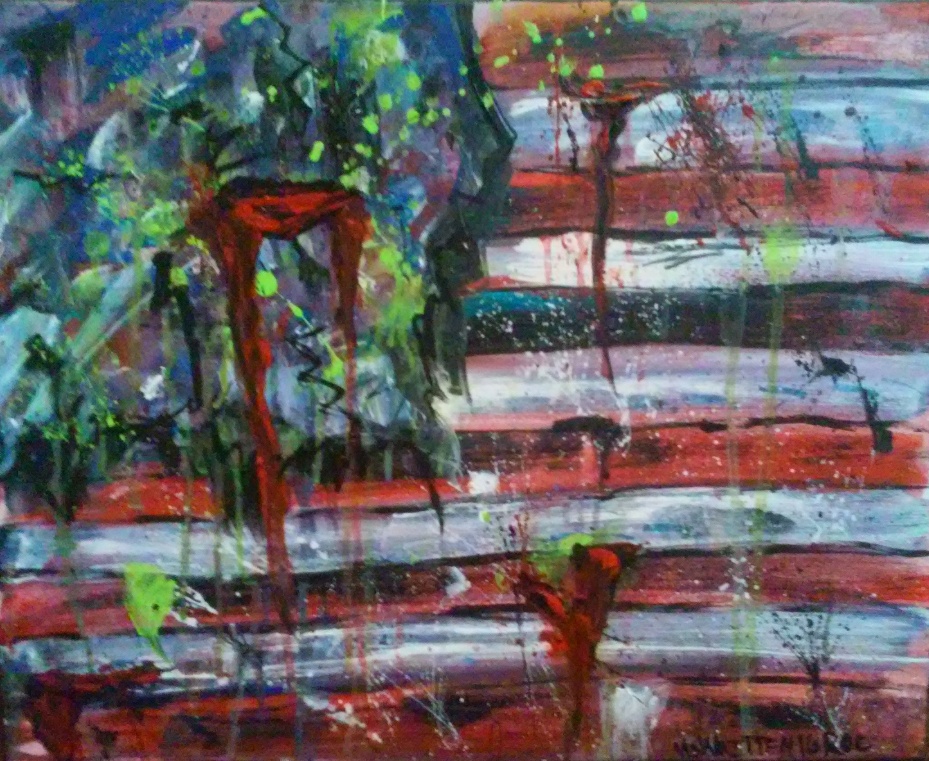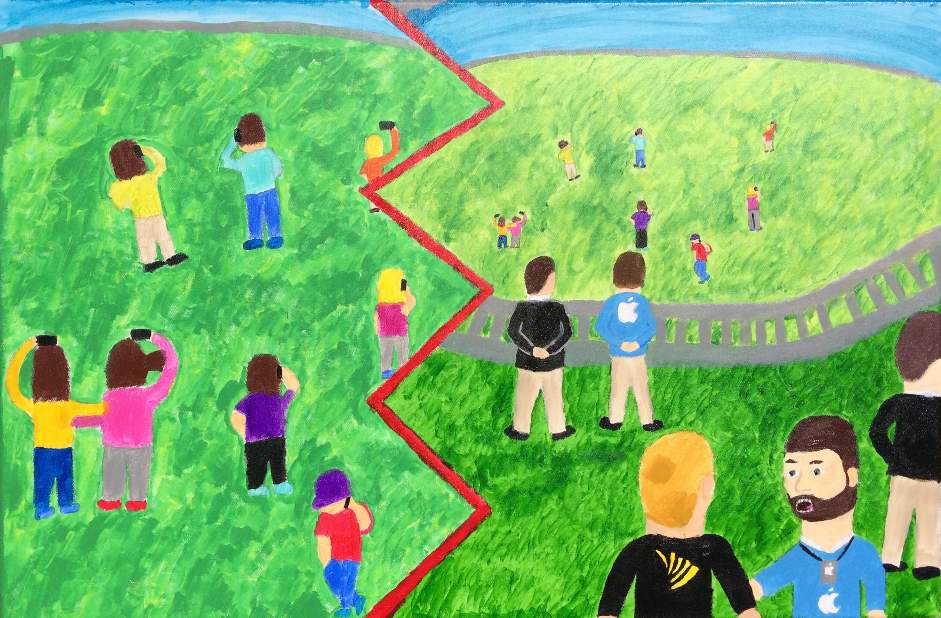Where can we find a safe haven for fragile freedoms?
Freedom In A Time of War
Nine year old Art Towata was moved with his mother and brother to the Manzanar War Relocation Center, an internment camp for Japanese Americans, north of Los Angeles. It was located at the foot of the Sierra Nevada between the towns of Lone Pine to the south and ironically Independence to the north in 1942. Manzanar was one of 10 camps used to incarcerate more than 110,000 Japanese Americans for a three-year period during World War ll. Motifs and themes from this transformative boyhood experience emerge both consciously and unconsciously in Towata’s paintings and ceramic works. The extent of this influence only became clear to the artist when he revisited the site some 60 years later.
Towata carried with him one of his signature encrusted pots and happened to place it on the ground at Manzanar. The pot was so evocative of Manzanar’s stark desert landscape and the interior, glazed with a soft blue, suggested the azure sky so often seen in California’s Central Valley. Towata recognized what he had been doing in his art. “Those cruddy pots are the environment on which I grew up as a kid.”
Black Wall
Art Towata explains, “When I first entered the camp, the black tar paper that covered the barracks was all that I could see.” A man in the camp told Towata that even in the desert you could grow flowers if you put enough care into the effort. Within this stark landscape there is the appearance of the fragile white chrysanthemum, which the Japanese associate with perfection of nature and transcendence.
Ceramic Puzzle
In a ceramic puzzle artwork, Towata conveys some of the oppression that came with living in the camp. Although there were no walls, barbed wire fences surrounded the internees. His abstract figures are trapped and immobile. Isolating them even further was the fear and suspicion that kept them from interacting with each other.
Art Towata
Alton, IL
Muslim Conversation
In 2010 I began an art project exploring Muslim identity in the United States. I approached Muslim-Americans for a conversation about how they feel about themselves in a post 911 America. I combined photos of these individuals and their words into some photo collages. This material eventually was shaped into a group of unique artists books.
I’m interested in exploring the difficult areas of society, the places where contradictions and expectations intersect with life as it is lived with all its challenges and compromises. The tangle of heritage and identity is constantly being redefined in our complex society. There is no one way to be an American and that is the essence of our freedom.
Aileen Bass
St. Louis, MO
In My Mind
My paintings are inspired by my everyday life, which is filled with alienation and loneliness. For me, the city is a familiar place and the image of the metropolis is close to me, in my present life as well as in my childhood memories. I am accustomed to living busily, to the fast pace and chaos of city life, and to the alienation of city dwellers. According to this characteristic, my paintings often seem overwhelming, overcrowded and complicated, due to their multiple layers. I look for my subject matter in specific features of a metropolitan area. My images are similarly constructed from small rectangular patterns, line and marks; I build them into my own abstract city.
By using blank space on canvas, I want to illustrate composure and relaxation. In my painting, dripping is an important way to express my theme. I start each painting with brush marks start from top of the canvas and end at the bottom. By falling the paints, I create new forms, multiple marks and overlapped lines naturally. With these techniques, I would like to create more intricate, dense and overwhelming chaos.
Moonyung Kim
St. Louis, MO
Simply Living
With minimal experience, my family made the decision to start over by living a simpler life. They moved from a new house in a subdivision to a doublewide trailer on a plot of land in the rolling hills of southern Indiana. Here, they intend to reach towards freedom from modernity and gradually develop a farm to provide for themselves. Separated from this process, I document this intimate transition as an outside observer. It is through my family’s actions that I imagine or facilitate my own ambitions to live closer to the land, and thus become closer to myself in the pursuit of discovering where it is I belong in society. More information can be found here.
Amanda Knigga
Nappanee, IN
The State of Our Union
I recently spent 2 months in Taiwan. I was there during their election. The KMT is out. A female was appointed president! I went to a political rally that was also a metal show! Someone running for Parliament who supported the New Power Party was also lead singer of a metal band! It took place at the monument of the first president of Taiwan who was a fascist dictator. I and my friends got to experience this form of political expression, and it was wild and amazing. This event changed my idea of freedom.
I feel their government is rather progressive now. Their overall life is just better. This all made me think of how freedom is here in the US. We have poisonous water! Businessmen running for president, pronounced racism, a failing education system, increase in “politically correct” mentality, Zika virus showing how WE have effected evolution, and the 3 ring circus that is the 2016 Elections.
This all makes me realize that art is the only pure form of freedom left! That’s why I chose to submit this piece. The flag is bleeding because once the front runner of freedom is now getting its ass handed to them by countries that not even thirty years ago were considered “Third World”.
Kori Moore
Rochester, NY
Otto
North Korea Sentences Otto Warmbier, U.S. Student, to 15 Years’ Hard Labor after a one hour trial for trying to steal a political propaganda poster from his hotel in Pyongyang.
Otto, who entered North Korea as part of a tour group, was detained on January 2nd as he was about to board a plane to leave the country. The state news media said that Mr. Warmbier had visited with the intent of “bringing down the foundation of its single-minded unity”.
Maureen Brodsky
Memphis, TN
Cellular Freedom
In this day in age, we like to think we have all the freedom we could ever want. What we don’t realize is that we are losing that freedom. We are losing it to some of the smallest things, cell phones for instance. Most people cannot go through their day without their cell phone. Our cell phones and the companies that provide them are controlling us. The left side of my painting shows us how we think it is always a nice sunny day and that we are free. The right side shows the companies controlling us. When they see us, all they see are dollar signs. It is like we are an exhibit for them to watch. We are trapped by our phones, we need to take this freedom back before its gone forever.
Lane Werth
Hays, KS
Monitoring
The motifs of ‘monitoring’ and pursuing of freedom are indispensable elements in my works. I use the structure of role-play gaming elements in my painting. Leveling up isometric perspective, character and scene creation, my painting is like a power simulation where I rule over a canvas rectangle. In addition to this, the looking-down perspective from the camera monitor represents a sense of pressure and the lack of a feeling of freedom in my daily life under the background of my country. Although the fictional world in my paintings looks colorful and bright, the viewer can still feel a cold and stony sense. It expresses my comprehending about ‘freedom’: it never happened beneath the glossy veneer in the social life. As we are living in the new era of Big Data, the security and privacy issues of individuals are always serious topics to be considered and appropriate for cultures all over the world.
Xizi Liu
Beijing, China
Many Colors, Many Sides
My work is focused and revolved around abstract, architectural photography. For this proposed submission, I would want to demonstrate the relationship between the built environment, nature, and the nuanced understanding of freedom.
My artwork specifically seeks to bring viewers into the abstraction of conflict through color contrast, multiple exposures, and a painterly strokes while still integrating contextual meaning through composition and colors.
My artwork seeks to speak to the living and the forgotten environments especially in times of constant change, heated debates, and continual strives for equality in the LGBTQ population despite backlash from society and social norms.
Julia Lopez
St. Louis, MO
Is Media Free in Turkey?
It started with the 17-25 December 2013 corruption period that media became silent and not free any more. All media organs and companies are captured. All police officers and press members that are searching for justice, all the company owners that support the people telling the truth are sentenced. Media cannot be captured and remain silent by its nature. MEDIA CANNOT BE SILENCED.
Gŭl Durmaz
St. Louis, MO
A Good Day Will Come
Let me start with this question: how many of us have chosen their birth place, gender or the color of skin? None!
I, as an artist who has lived in Iran, can never wipe two issues from my mind and art. The first one is what happens in my surroundings. Being born and raised in the Middle East, I have always been sensitive about political and social issues. The second one is my memory that always plays a significant role. My breakfast, lunch and dinner are the news. I know the media lie to me, but I am addicted to reading these lies and discovering the kernel of truth behind them.
I created 12 Time magazine covers. Each cover is related to a different country. Some covers show how people lost their freedom. This cover shows the short period of time in which my country had freedom. I want to just close my eyes and remember that time.
Maryamsadat Amirvaghefi
Fayetteville, AR














0 Comments